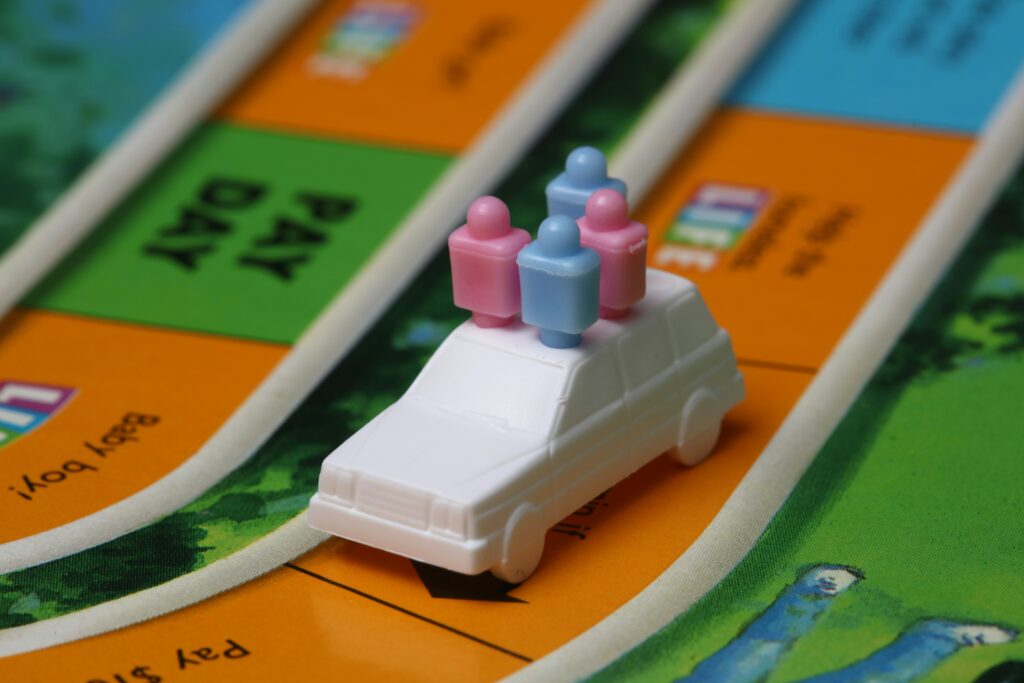
How Gamification Supports Learning
Gamification is incorporating game elements into non-game contexts. In education, this often involves using game elements like points, badges, leaderboards, and challenges to make learning more active, interactive, and enjoyable. By turning traditional educational activities into game-like experiences, educators can create a more dynamic and engaging learning environment.
In this post, you’ll find some evidence that supports the use of gamification principles in teaching and learning.
It uses extrinsic motivators to reward effective learning behaviours.
Gamification often relies on extrinsic incentives to incentivize positive learning behaviours. It does this through recognizing small, incremental achievements: points for a task, immediate feedback on answers, and progress bars with milestone achievement awards. Often, gamified activities will also allow learners to try again, repeating a task until they reach threshold. This repeated practice supports memory through practice and retention of key concepts. Things like awards in eConestoga, emojis in chat conversations, and little prizes in class can all be construed by learners as extrinsic motivators.
It “hacks” our brain wiring.
Neuroscience and biology are central to the learning impact of gamification. Our brains respond positively to things like imaginative scenarios, music and sounds, checkmarks, and achieving points. When we experience these, our brains release dopamine and serotonin, which relax the body, stimulate memory, and make us feel focussed and attentive (Ye, 2016). Especially useful before a due date or exam, gamified practice activities such as quizzes or game shows can help relax students and show them where they need to study. But be cautious when you use this strategy! However, the effect only works if learners can be successful at the practice tasks (Subhash and Cudney, 2018). Learn more about competitive and gamified quizzing.
It reinforces learning through repetitive practice and instant feedback.
As you might guess, making learning fun and increasing practice attempts can improve learners’ overall performance. Gamification can help do this by making repeated practice fun or allowing learners to compete against clocks (a.k.a speed runs) or set and try to accomplish personal goals. Gamification-based teaching practices can help learners feel more positive about their lessons or tasks, which leads to more practice and, hence, greater success when the tasks are assessed (Schoech, Boyas et al., 2013; Yildirim, 2017). Designing activities as challenges, setting goals, or getting students to practice a task again but more quickly or against a clock can help students practice under pressure and improve their muscle memory and time management skills.
It helps frame learning tasks as novelties and “play.”
Variety in learning activities stimulates learners’ interest and attention (Buckley and Doyle, 2016). Bringing in new and different activities helps break any monotony in the learning experience, and novelty often positively affects learners’ perceptions of their courses. Gamification can significantly boost student motivation and engagement simply by making learning activities interactive and enjoyable (aka: fun!) (Dominguez et al., 2013). Imagination also plays a big role in the cognitive boost that gamification provides. For example, world-building refers to the process of creating a fictional world or setting where learning activity occurs. In practice, this form of gamification can involve creating short or ongoing scenarios or activities that use these characters, scenes, or storylines. By incorporating imagination this way, you can make learning more immersive and help students connect with the material on a personally relevant level. This approach is positively correlated to problem-based learning (PBL) and case-based learning (Buckley and Doyle, 2016; Subhash and Cudney, 2018). By incorporating imagination, you can make learning more relevant and immersive and deepen learners’ connection to the content.
It can help build intrinsic motivation to learn.
Team-based, gamified activities can build all three levels of engagement: cognitive, emotional, and behavioural (Giannetto, Chao, and Fontana, 2013). This heavy-hitting impact on engagement affects learners’ overall interest in what they are learning. It can make students curious to learn beyond what is covered in class, motivating them to study more, ask questions, and take a personal interest (Buckley and Doyle, 2016). Using gamification as a learning strategy can help build intrinsic motivation by developing learners’ innate curiosity and willingness to learn autonomously. This often leads to learners who are more interested and invested in their discipline.
Similarly, gamification can support personalizing learning, another intrinsic motivator. Games often allow us to:
- Set personal goals to achieve
- Monitor and track our own progress
- Benchmark our growth over time.
By encouraging students to set personal goals to achieve and monitor their progress, they can start to understand how they grow and learn over time. As learners do this, they learn more about themselves, their strengths and their limitations. By designing learning activities that build curiosity and let them set and check in on personal goals, we can help students build intrinsic motivation to learn.
It can help build collaboration and resource-sharing skills.
While we typically think of games as single-player or competitive, many types of games are collaborative and require resource sharing. Consider whether a jigsaw-style learning activity might combine with gamification elements like money or points to ”spend” on information and resources from other groups or from a collective pool of resources. Alternatively, a task might require students to come up with effective questions to ask of a person to acquire needed information, requiring each person to role-play effectively (much like in role-playing games like Dungeons and Dragons). These role-play games can be richly connected to scenarios students would encounter in their respective industries or discipline. This kind of collaborative, team-based learning can connect to outcomes that require teamwork and communication skills and can help model collegial relationships they will build in the field (Schafer et al., 2013). Many learners might enjoy games designed with team-based play or other group learning in mind, so it can be well worth investing time in designing these types of learning tasks.
It can help make learning progress visible.
Often, gamification lets you see improvement over time through metrics like points, time limits, leaderboards, awards, and goal check-ins. These metrics can be powerful indicators of learning for students, who may struggle to visualize their progress beyond grades. eConestoga discussion boards or ePortfolios, and apps like Padlet or the H5P Documentation Tool can help you create opportunities for reflection that allow learners to see their accomplishments. This could include tracking the number of words typed, minutes spent studying, or grades on assignments. It can also include badges and awards in eConestoga if you also create a way to acknowledge these achievements in the course. Similarly, if your course has practical, time-limited activities, and it’s safe to do them quickly, learners can track their timings to see improvements in their speed and accuracy. An example of this might be tracking typing speed and accuracy or the number of correct identifications of materials or needed equipment within a time frame.
Summary
Gamification offers numerous benefits for learning. Beyond just being “fun,” game elements such as points, badges, and leaderboards can help create a learning environment that engages students cognitively, socially, and behaviourally. Extrinsic motivators, repetitive practice, and instant feedback tap into our brain’s natural responses to rewards and challenges while also building innate curiosity and interest in the subject. Social play can help prepare students to collaborate and communicate with colleagues in the field.
Ultimately, gamification is a sound course and lesson design strategy. As you learn more about gamification, you’ll be able to make effective choices around designing activities and units that support and motivate learners. Reach out to Teaching and Learning to discuss ideas around gamification within your courses.
References
Buckley, P., & Doyle, E. (2016). Gamification and student motivation. Interactive Learning Environments, 24(6), 1162-1175. https://doi.org/10.1080/10494820.2014.964263
Domínguez, A., Saenz-de-Navarrete, J., de-Marcos, L., Fernández-Sanz, L., Pagés, C., & Martínez-Herráiz, J. J. (2013). Gamifying learning experiences: Practical implications and outcomes. Computers & Education, 63, 380-392.
Giannetto, D., Chao, J., & Fontana, A. (2013). Gamification in a social learning environment. Issues in Informing Science & Information Technology, 10, 195-207.
Schafer, S., et al. (2013). Collaborative learning environments and their impact on student engagement. Journal of Educational Technology, 29(4), 45-56.
Schoech, D., Boyas, J., et al. (2013). The impact of gamification on student performance. Journal of Educational Research, 56(2), 78-89.
Subhash, S., & Cudney, E. A. (2018). Gamified learning in higher education: A systematic review of the literature. Computers in Human Behavior, 87, 192-206. https://doi.org/10.1016/j.chb.2018.05.028
Yee, N. (2006). The psychology of massively multi-user online role-playing games: Motivations, emotional investment, relationships and problematic usage. CyberPsychology & Behavior, 9(6), 772-775.
Yildirim, I. (2017). The effects of gamification-based teaching practices on student achievement and students’ attitudes toward lessons. Internet and Higher Education, 33, 86-92.
Generative AI was used to assist in the drafting and rewriting of this article.













